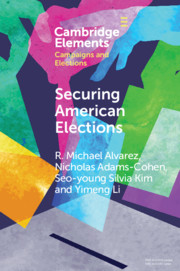Element contents
Securing American Elections
Published online by Cambridge University Press: 05 November 2020
Summary
Keywords
- Type
- Element
- Information
- Online ISBN: 9781108887359Publisher: Cambridge University PressPrint publication: 26 November 2020
References
- 8
- Cited by



